Car Camping 101: Complete Beginners Guide
Plan an epic camping trip with this complete 101 guide to camping for beginners including tips for planning, what to pack, gear, and cooking.
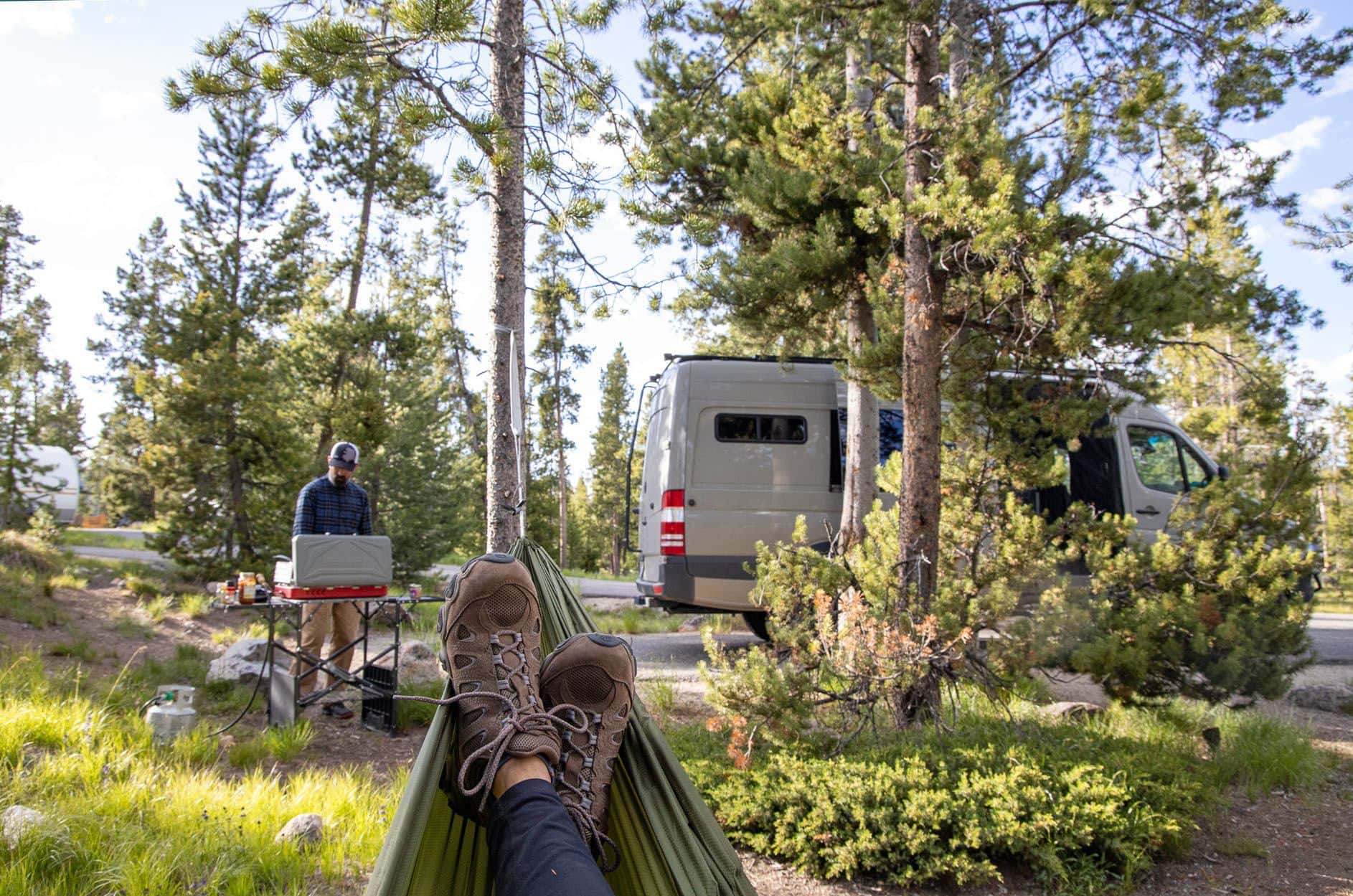
Is it your first time camping or are you looking to take your camping game to the next level? Consider this your car camping 101 crash course! You’ll learn everything you need to know about camping for beginners including how to plan an epic camping trip, what to pack, what gear you’ll need to be comfortable, what to cook, and more.
Camping is an easy and enjoyable way for any kind of outdoor enthusiast, beginner or not, to get outside and soak up the benefits of the great outdoors. If you plan it right, your camping trip will put you close to hiking trails and other outdoor adventures. It’s also one of the best introductions to sleeping under the stars for those who are interested in learning how to backpack. Plus, car camping makes it easy to score scenic (and secluded) spots, travel locally on a budget, and do more in a shorter amount of time.
Ready for an epic car camping trip? This guide to camping for beginners has you covered!
This post may contain affiliate links.
How to Plan a Car Camping Trip
Taking the time to prepare for your first car camping trip will allow you to make the most of your experience. Luckily, planning ahead doesn’t take up a whole lot of time and you’ll have a much better shot at snagging the best campsites on the dates that you actually want them. It might take a little bit of practice to get into the swing of things, but after your first few car camping trips, you’ll be a pro at navigating online reservations and scoring some prime real estate.
Here’s a quick guide to planning your first car camping trip:
- Pick a region that you want to visit, and start exploring the campgrounds in the region.
- Pick a few dates that will work for your car camping trip. Consider your schedule, your companion’s schedule (unless you’re going solo!), and weather.
- Determine how many nights you’d like to camp.
- Look into the reservation process: Is it first-come, first-serve or are advance reservations required?
- Make a reservation (if needed), then start planning your itinerary by researching the area.
If you’ll be camping in the fall, check out our tips for camping in fall so you can prepare for changing weather and stay warm.
Pro Tip: Reservations for campgrounds in popular areas such as National Parks and beaches tend to fill up months in advance, especially in the summer and around holidays. Look up the places you want to visit as far in advance as possible to see when campground reservations open, then mark your calendars so you can book as soon as reservations open.
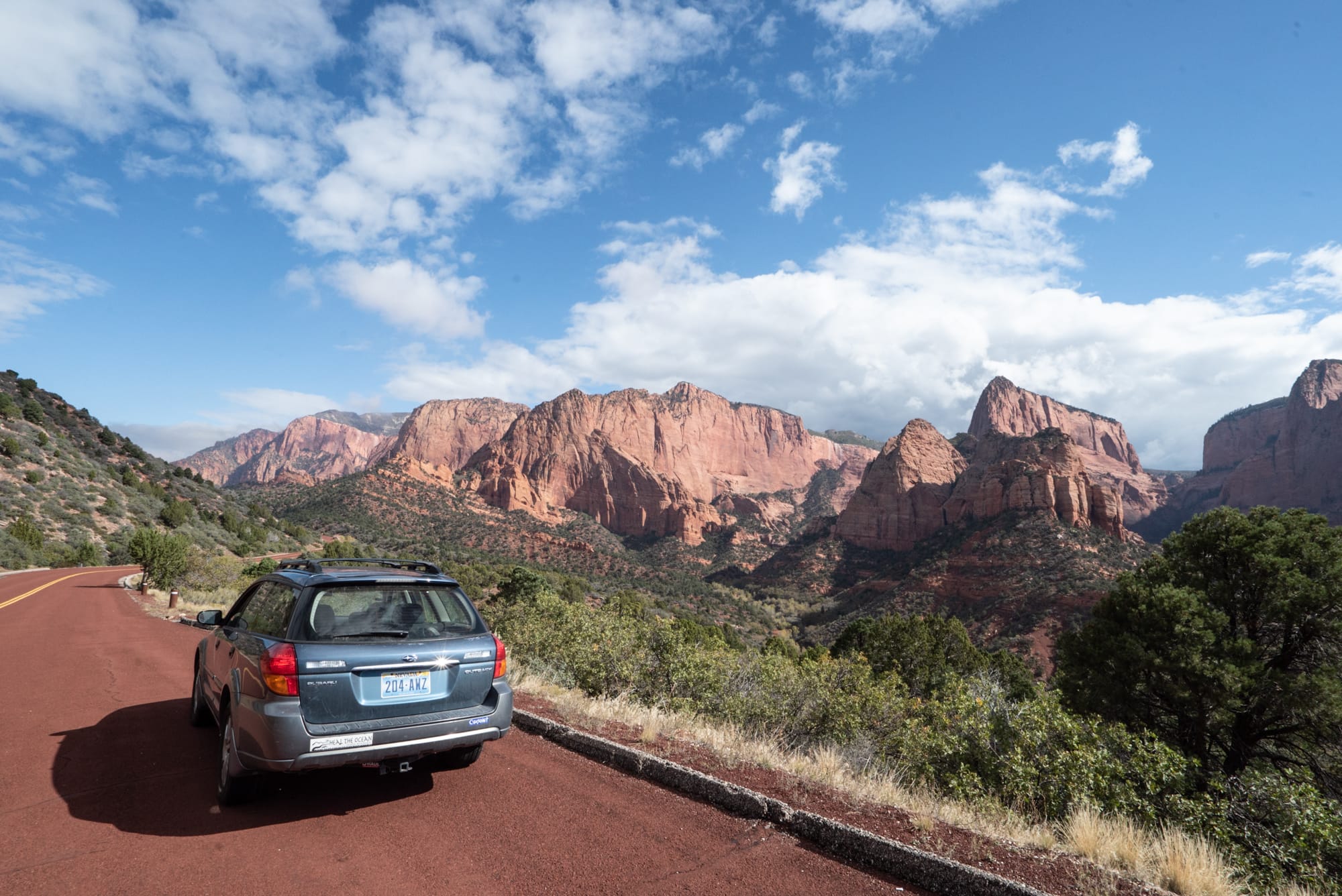
Save this post!
Enter your email & I'll send this post to your inbox! You'll also receive my weekly newsletter full of helpful advice for planning your adventures.
How to Pick a Campsite
There are a variety of different types of campsites out there. Some campsites are tent only while some can accommodate larger vehicles like vans and truck campers or have full hookups for RVs, and some campsites are designed for large groups. Most campgrounds also have a few accessible campsites designed to accommodate wheelchairs.
Another thing to point out is that in addition to paid campgrounds that generally cost anywhere from $8-35/night, there are also plenty of free campsites (also called dispersed campsites) across the U.S. Here’s a quick breakdown of the difference between the two.
Read next: New to car camping? Read our tips on how to be a good campsite neighbor.
Paid Campsites
Paid campsites are established campsites at campgrounds that are managed by a public lands agency, the state, or a private owner. They require a fee that varies by location and the type of amenities they provide. At minimum, paid campsites usually have pit-toilets, picnic tables, and a fire pit while some have more features and services such as flush toilets, hot showers, potable water, and dish washing stations.

Dispersed Camping
I use a variety of tools and apps to find free, dispersed campsites that are located on public lands and can be found mainly across the Western US. They are places people have camped at before, but they aren’t actively managed by a camp host. They usually don’t have amenities like water, bathrooms, trash cans, and picnic tables so you’ll have to come fully prepared with everything you need.
If you decide to dispersed camp, you’ll need to be ready to pack out all your trash (including toilet paper) and everything you bring with you in accordance with Leave No Trace principles.
Since dispersed campsites don’t have bathrooms, you’ll also need to bring a toilet with you or know how to properly poop outdoors with minimal impact where this is allowed. Note that many places are starting to require you to bring a basic toilet system since they are becomming more impacted as more people get outside, so be sure to check the requirements of the areas you plan to camp in to arrive prepared. Always pack out all your used toilet paper and do your best to leave the places you camp better than you found them.
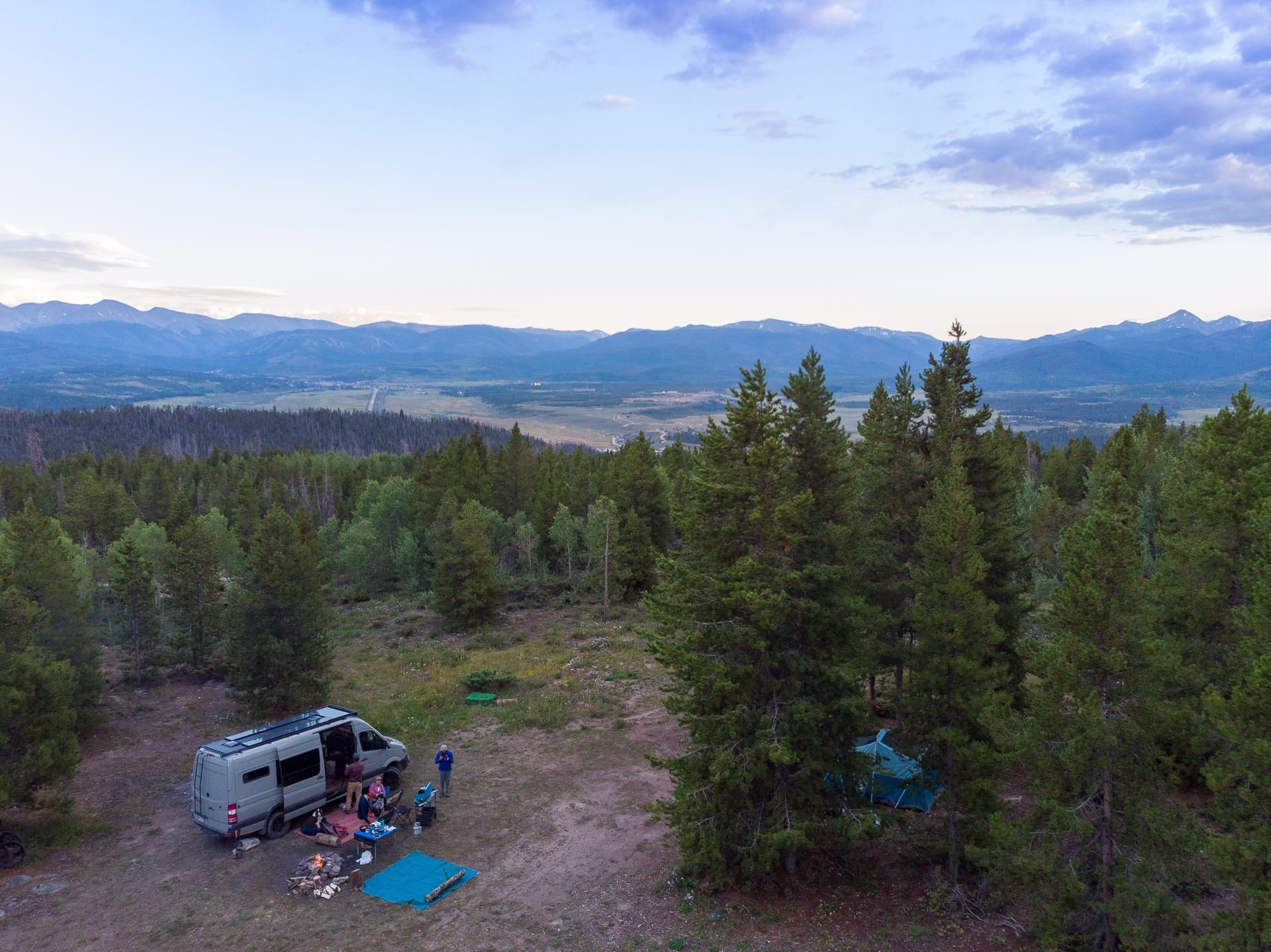
#1 campsite finder app
Try The Dyrt PRO free for 30 days
Get a FREE 30-Day membership to The Dyrt PRO, one of our favorite apps for finding campsites.
Perks include:
• 5,000+ free camping locations
• 1,000+ campground discount network
• $0 extra booking fees
• Get reservations at sold-out campgrounds, and more
Use the code BEARFOOT to get 30 days free!
How to Pack for a Car Camping Trip
Having your car camping gear dialed will make packing for your camping trip a breeze, plus once you’ve got it all together, you’ll always be ready for spur-of-the-moment camping trips. Consider a good set of car camping gear an investment for years of camping trips and outdoor adventures.
Check out our complete Car Camping Packing Checklist for a full rundown of all the items we take on car camping trips.
For you ladies out there, these camping tips for women share a few additional items we like to bring along to help us feel fresh and clean on camping trips.
If you’re heading out in the winter or shoulder seasons, check out or post on cold weather camping tips to help you stay warm.
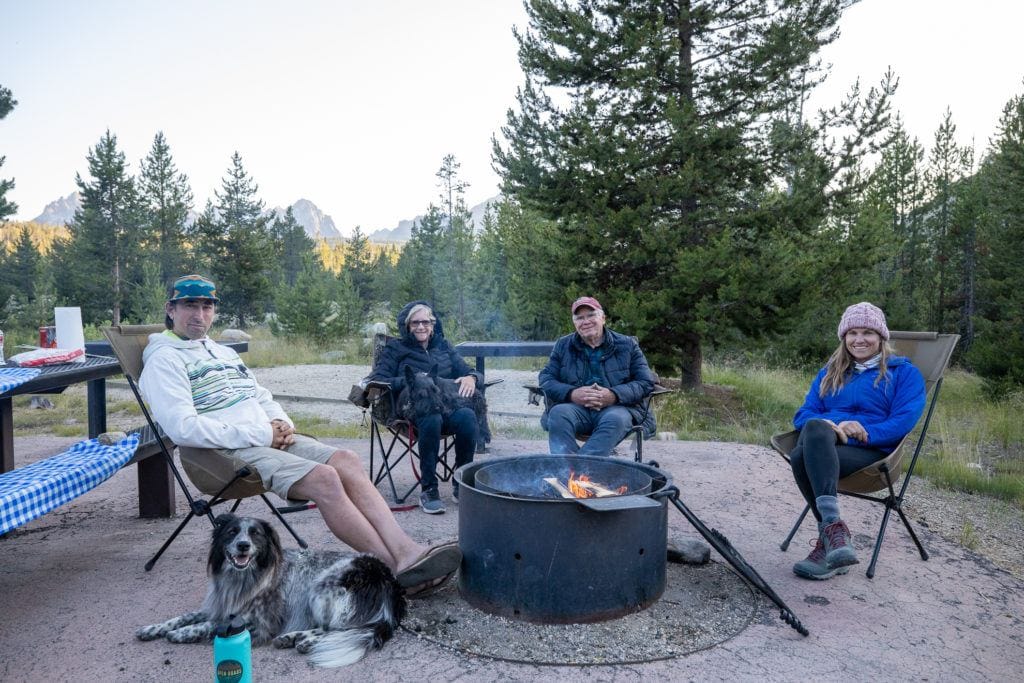
Car Camping Cooking Essentials
It’s easy to become a camp chef when you’ve got a fully-stocked camp kitchen for your car camping trip. Start by getting your cooking essentials organized in a bin with a lid so it’s all in one place – that’ll make it easy to load into the car, find what you need at camp, and store at home, ready for your next adventure. Add a few dynamite recipes that can feed a crowd and you’re golden.
Check out the full list of my favorite camp cooking essentials to get your camp kitchen gear together. These Stanley cookware and drinkware items make great additions to any camp kitchen as well.
It helps to plan your meals in advance so you can buy and bring what you need without ending up with all kinds of excess items you don’t end up using. Doing a little prep work at home will make cooking at camp easier too and will give you more time to hike and enjoy the area.

What to Wear Car Camping
We recommend packing comfortable activewear for your camping trip. Think versatile pieces that don’t show dirt easily, can be worn more than once, and can be layered. Go for breathable moisture-wicking base layers that have a good amount of stretch – clothing you can lounge in, hike in, and really do anything in. I suggest avoiding cotton, as it retains moisture and won’t keep you cool, warm, or dry if you get sweaty. You’ll want warm outer layers like an insulated jacket, hiking pants, and a rain jacket as well depending on the weather, plus a warm pair of socks, a hat, and gloves especially if the temps will dip down after sunset. Be sure to check the forecast before heading out and pack plenty of layers in case of unexpected weather.
Check out our guide on what to wear hiking for some good car camping apparel suggestions.
You’ll find plenty more suggestions for comfortable, versatile, car camping clothing in these blog posts:
- What to Wear Hiking in Fall
- Winter Hiking Clothing & Cold Weather Layering Basics
- The Best Lightweight Rain Jackets
- The Best Synthetic Down Jackets for Women
- The Best Women’s Hiking Pants
- The Best Women’s Hiking Boots
- The Best Women’s Hiking Underwear
- Teva Sandals Review
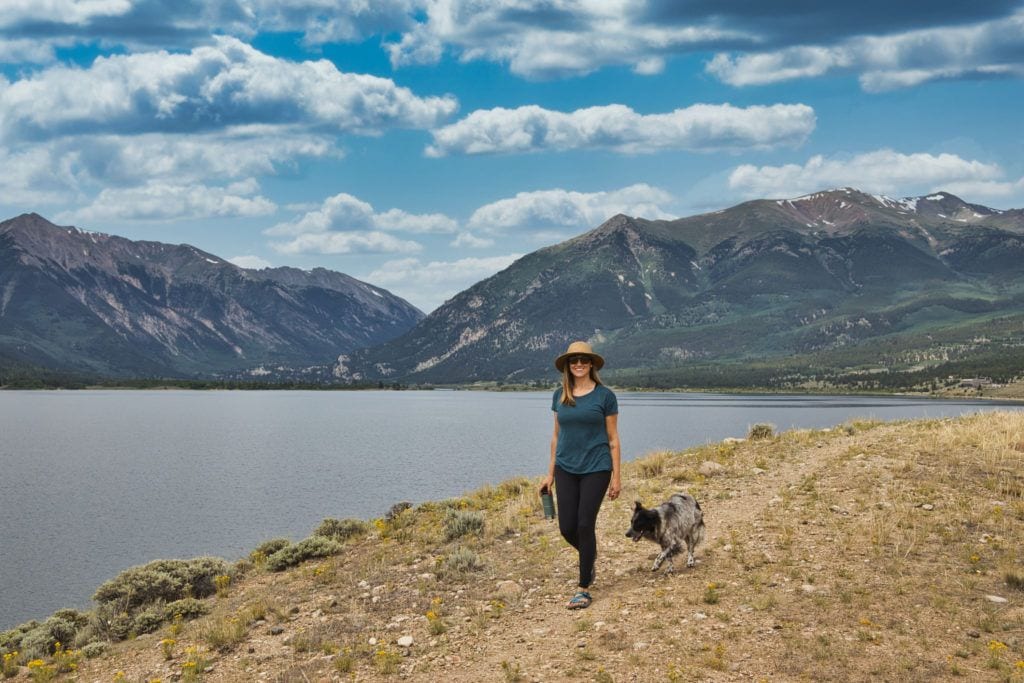
How to Leave No Trace on Your Car Camping Trip
Take a few minutes to learn the seven principles of Leave No Trace, a set of guidelines created by the Leave No Trace Center for Outdoor Ethics. These guidelines will help you reduce your impact while enjoying the outdoors when you’re car camping. As more people get outside, it’s more important than ever that each and every one of us follow Leave No Trace principles so we can take care of the places we recreate in and leave them better than we found them whenever possible.
Here are a few more helpful guides that dive into different aspects of Leave No Trace as well as the unspoken rules of the trail:
- How to Pick a Campsite and Leave No Trace
- How to Reduce Waste on Car Camping Trips
- Campfire Safety Tips
- Trail Etiquette 101: The Basic Rules of Hiking
- How to Poop Outdoors and Leave No Trace

How to Find Things to Do While Car Camping
Going car camping is one of the best launchpads to more outdoor adventures, or to simply soak it all in and have a great time hanging outside. If you’re looking for some ideas or want to know what to do while car camping, we’ve got a few tips.
- Look up local hikes near your campsite – here are some of The Best Trailfinder Apps and Websites for Discovering Local Hikes
- Practice your photography – here are some photography tips from a pro photographer
- Listen to some of the Best Outdoor Podcasts
- Bring along something to keep you occupied at camp: A Sketch pad and pencils, a hammock and a great book, a deck of cards, a ukulele or guitar — if you’re musically-inclined
- If you’re camping close to town and go out to eat, sit at the bar and chat up the bartender to get some suggestions or local favorites
- Use the REI MTB Project or Trailforks to find local bike trails
- Download a constellation app, like Sky Map, for stargazing on a clear night

Got any questions about car camping for beginners? Leave a comment below!

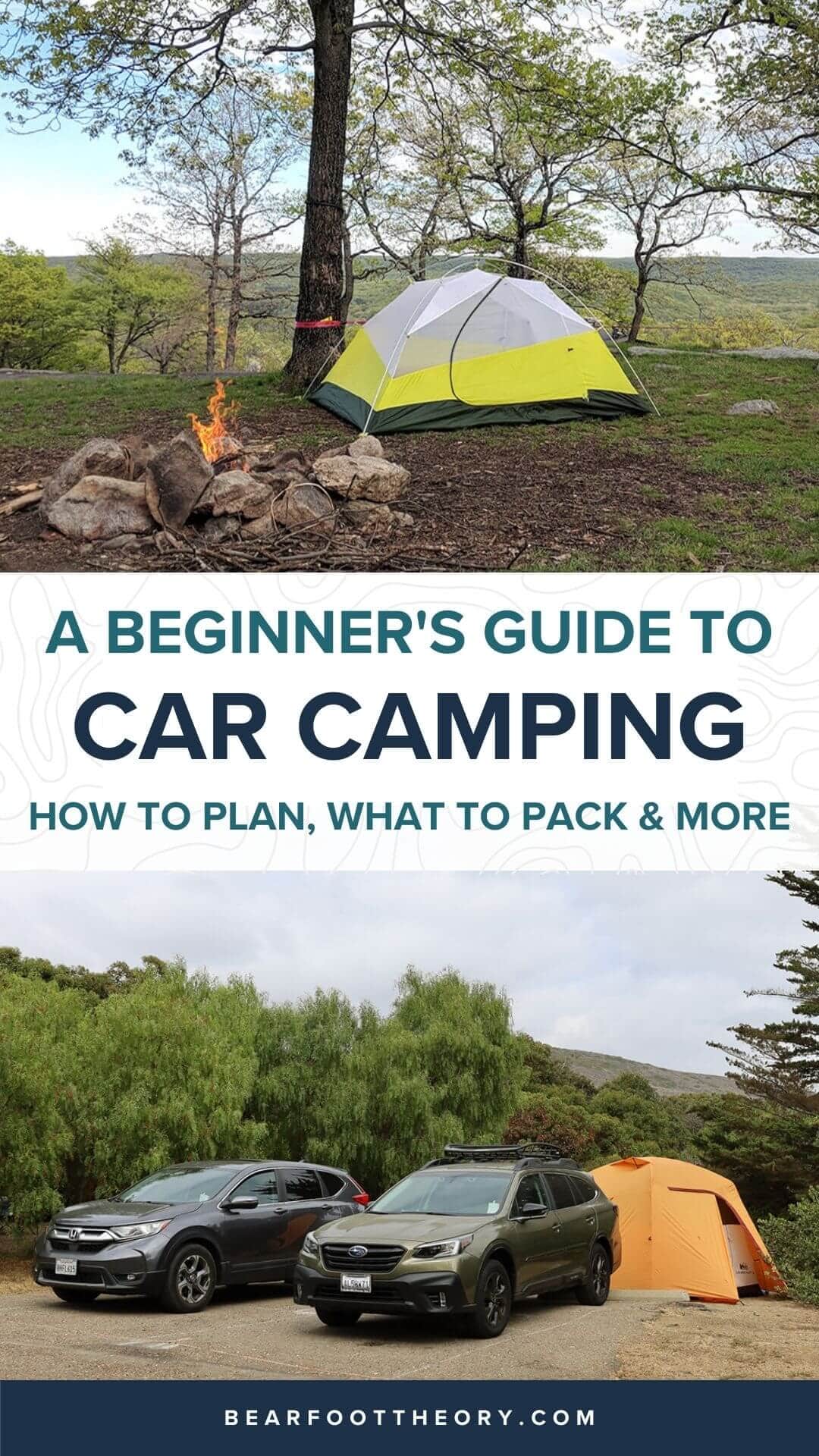
This is a great comprehensive guide. I’m a total city girl and just went car camping for the first time last month. It’s a total game changer. I feel like the outdoors is so much more accessible to me now!
Glad you found this helpful and that you’re getting out there!
Thanks for reminding me to check with my companion’s schedule and consider the weather if we were to plan for our first camping trip. My friend mentioned that it is time for us to catch up and I suggested that we spend a weekend outdoors. Since she agreed, I’ll ask her when she would be available and see if it’s time to purchase a rooftop tent for my vehicle.
https://bundutecusa.com/bundutop-rooftop-tents
Hi there Kristen
Very impressed with this beginner’s guide.
Do you have any suggestions , of how to convert a LandRover Defender 110 into a camping car?
Looking forward ,
Rolf
Hi Rolf, thanks for reading! We dont have any direct experience with a conversion like that but I’m sure it’s doable and that you could find some helpful resources online by googling that. My husband and I converted a Lexus GX470 into a camping car by taking out the back seats, installing a platform for a bed with storage space underneath, and creating a table and kitchen setup out of the back. Best of luck!
Good read and a good reminder to prepare. Planning is the key. It sounds easy and fun to jump in the car and go but there is actually a lot more to it.
Thanks for sharing such a fantastic ideas. It will be a great source of information for the people who are looking for it.
I totally agree with what you have said, I have taken down notes for our next camping adventures. I need to search more about LED tent lights thou for our tools at night.
A month before my elementary school’s graduation we were taken on a so called “Camping Trip and Make a Camping Tent .” Since this was my first ever time away from home without my parents, it’s stored in my ‘always gonna remember side of my brain.’ Even though we were in Year 6, we were already very mature and did stuff by our self.I totally agree with what you .
your story is interesting and i like it your idea to make a camping tent and enjoy the nature.